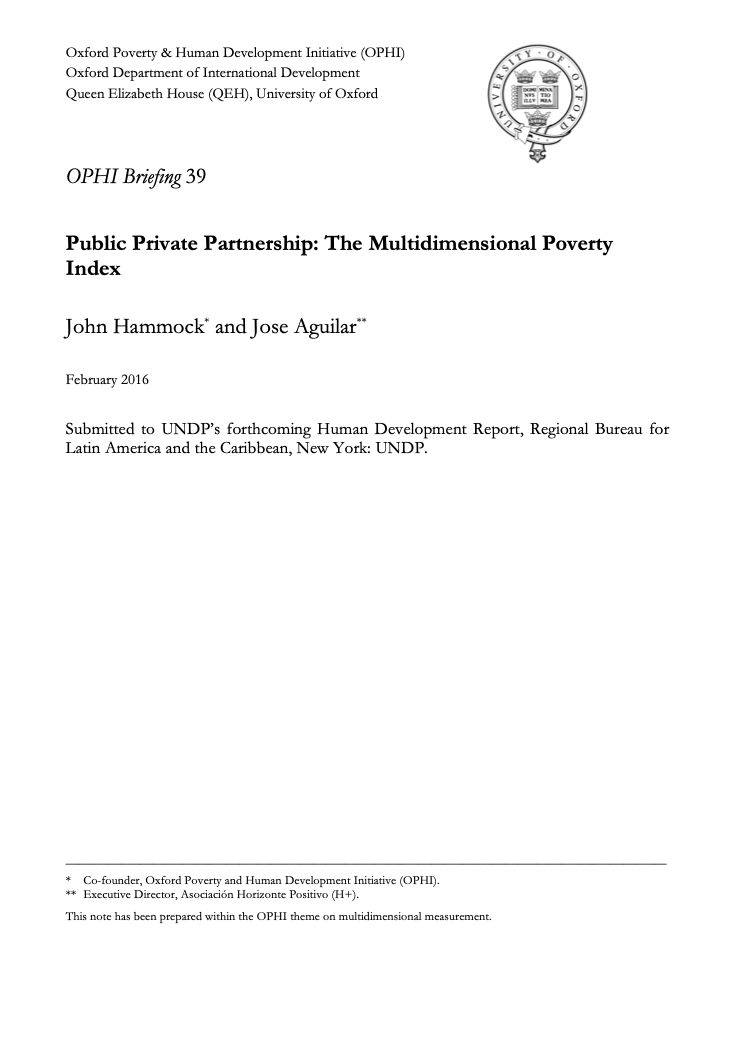Public Private Partnership: The Multidimensional Poverty Index
Draft submitted to UNDP’s forthcoming Human Development Report, Regional Bureau for Latin America and the Caribbean, New York: UNDP. In this paper we are dealing with poverty—with those people who live below what is considered by the society as the minimum acceptable of level of deprivations that people could and should suffer. Traditionally, income has been used as a proxy for poverty, with national governments establishing income poverty lines under which a person is considered poor, and therefore eligible for special efforts by government to move them above that established threshold. Multidimensional poverty acts in a similar way, but now looking at poverty in the many dimensions that batter a poor person’s life at the same time causing them to fall below the multidimensional poverty line established by the Multidimensional Poverty Index. The MPI can give data on the places poor people live, their ethnic composition, their religion, and the composition of each poor person’s poverty. But in all this, the MPI is focused on those who are poor—not on society as a whole. The MPI is a poverty measure.
Citation: Hammock, J. and Aguilar, J. (2016). 'Public Private Partnership: The Multidimensional Poverty Index', OPHI Briefing 39, Oxford Poverty and Human Development Initiative (OPHI), University of Oxford.



